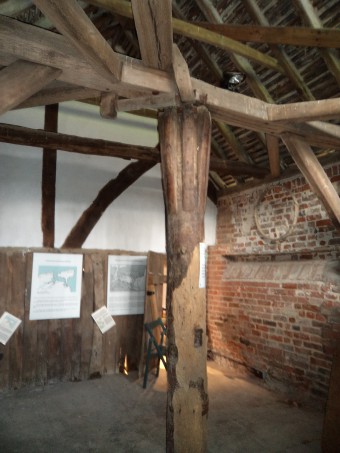I was fortunate enough this week to attend Richard Eales’ lecture on ‘The English and the French in Norman Kent and Canterbury’ as part of the winter programme run by the Canterbury Historical and Archaeological Society [CHAS]. As a former lecturer at the University of Kent and now lecturing part-time at Canterbury Christ Church University, Richard Eales was well known to many of his audience that included past and present members of both universities, as well as people from Canterbury and the surrounding area. Although someone whose knowledge transcends time and space – he has studied and lectured on medieval topics as diverse as the Ottonian Empire to the Wars of the Roses, and from English castles to the crusader castles of the Middle East – he is an acknowledged expert on Norman England (and chess). Keeping with the former his lecture on Wednesday focused on matters of ethnicity and nationalism, in particular how did different groups within society see themselves, what were the markers of identity, how did matters of assimilation take place and what tensions were there during the period from Duke William’s invasion until King John’s loss of Normandy that precipitated baronial strife and Magna Carta, which presumably everyone is aware of this year. Among the issues he discussed were matters of language, the differing uses, roles and users of Latin, French and English, and of naming patterns. For example, among the Kent peasantry the use of English (Anglo-Saxon) male forenames declined far more quickly compared to their female counterparts, the charting of such matters of continuity and change made possible by the high level of survival of small land grants and rentals among the records of Kent’s numerous religious houses.
The medieval town crane at Fordwich, fantastic survival in the undercroft of this Cinque Port’s town hall
Well worth visiting!
These issues of familial and individual identity among those below the elite have been studied by social and cultural historians interested in a wide range of different time periods, although because of such issues as industrialization, de-industrialization, total war and globalization, modernists and contemporary historians have perhaps been most noticeable in the literature and on TV. For the earlier periods, the continuing ‘love affair’ with kings, queens, lords and ladies has rather dominated matters, but historians such as Michael Wood, for example, and the popularity of the ‘Tudor Farm’, based at the Weald and Downland Museum at Singleton that I mentioned a couple of weeks ago, have drawn attention to the lives of medieval and early modern country and town dwellers. And, even more importantly, that the exciting questions that modernists ask about identity, community and social memory have been increasing applied to these earlier periods by a growing army of young academics, as well as certain older distinguished scholars.
The former will be well represented at two events organised through this Centre at Christ Church that will be taking place soon. The first, the one-day conference on ‘New Development in Kent [early modern] History’ is now only a fortnight away; and the second will be a study day on ‘How the Great War changed Kent’ on 23 May, which I mentioned last week. At the latter Dr Martin Watts will be joined by Dr David Budgen, among other colleagues from Christ Church. Martin and David will be giving short talks respectively, on the lives and experiences of men and women, and children during the Great War and its immediate aftermath, which will then be followed by linked workshops as a way of introducing a more hands-on approach. Details about this study day will appear on the Centre’s website in the next couple of weeks, so if you are interested please watch out for these and see how you can book a place.
 Centre for Kent History and Heritage
Centre for Kent History and Heritage Sheila Sweetinburgh
Sheila Sweetinburgh 1387
1387


